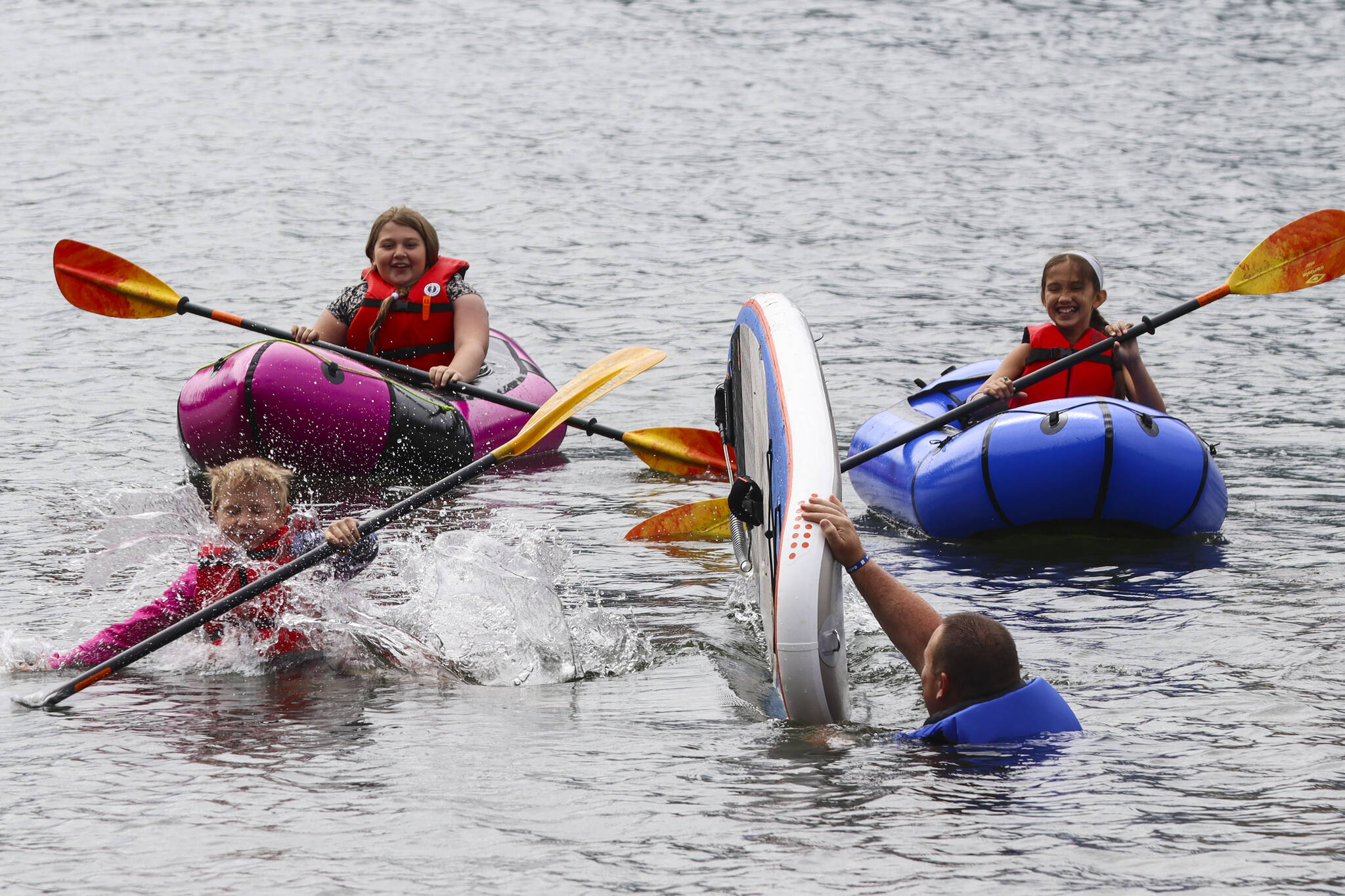On a warm Thursday morning, the Coast Guard took turns throwing children into Twin Lakes.
Far from malicious intent, the goal of the instructors was to teach the kids valuable water safety skills for Alaska waters, a state inextricably linked to the living ocean, especially in Southeast Alaska.
“We started a program with the state of Alaska probably four years ago called Cold Water Paddlers,” said Mike Folkerts, Coast Guard District 17 boating safety specialist. “We’re seeing a shift in fatalities in paddlers falling and more and more succumbing to Alaska’s cold waters.”
[Tropical shark, Alaska home: Reef Shark replaces cutter Liberty]
The kids, who were with a middle school-aged Discovery Southeast summer camp, are at an ideal age to learn to be safe on the water, said instructors.
“Teaching the younger children can have some ups and downs,” said Petty Officer 2nd Class William Peters in an interview. “Once they get used to it, they go full bore. They’re better at doing it than us.”
Kids practiced recovering after getting knocked out of a small craft or paddleboard, swimming in various kinds of personal flotation devices, and throwing rescue lines.
“They’re super organized,” said Maggie Garrison, a naturalist with Discover Southeast. “It’s great for the kids to get into small groups and go through the stations.”
Garrison added that Discover Southeast was fortunate to have so many good partnerships with community organizations like the Coast Guard.
“We get these kids this young and they learn a lot faster than adults,” Folkerts said. “The focus is on life jackets and cold water immersion. That’s the No. 1 causal factor for boating fatalities in Alaska.”
Fun in the (partly) sun
It’s said that the best way to teach is through fun, though, as the kids would probably agree.
“(I like) going in the water and the paddleboard and the kayak,” said Ivan Shockley, one of the kids going through the stations. “I like swimming! And the kayak reminds me of fishing and I like fishing. And just ‘cause.”
Shockley said he’d recommend the boating safety class to others.
“I’d tell ‘em to do it because it’s fun,” Shockley said. “Jellybeans.”
Others offered elaboration on aspects they enjoyed while echoing many of Shockley’s points.
“It’s super fun,” said Megyn Linstid, another participant. “I liked the kayaking and the purposefully falling off. It’s not as cold as you might think.”
Linstid also talked about some of the other stations.
“We practiced throwing a rope bag to a buoy that was simulating a person,” Linstid said. “It was kind of tricky coordinating it.”
The Coast Guard offers classes to those who ask, Folkerts said, though the geography of Southeast Alaska and the equipment necessary to teach boating safety — to wit, boats — can make offering classes to smaller communities tricky.
“Because we’re a voluntary (boating safety) education state we’re pretty much on demand,” Folkerts said. “This class is quite adaptable. We can focus on a particular age group to train. A surprising number of adults have been requesting classes.”
The casualty demographics for boating-related fatalities have been shifting with more coming for paddle-craft users. Folkerts said this may be in part where people are getting their watersport equipment- buying a kayak at a watersport-oriented store will usually involve interaction with employees who know about water safety, whereas someone buying a paddleboard at a big-box store may not have that same conversation, and may get out on the water without thinking through their safety.
A mandatory boating safety education bill, SB148, sponsored by state Sen. Roger Holland, R-Anchorage, was introduced to the Alaska State Legislature, but was later pulled for revisions, Folkerts said.
• Contact reporter Michael S. Lockett at 757-621-1197 or mlockett@juneauempire.com.

